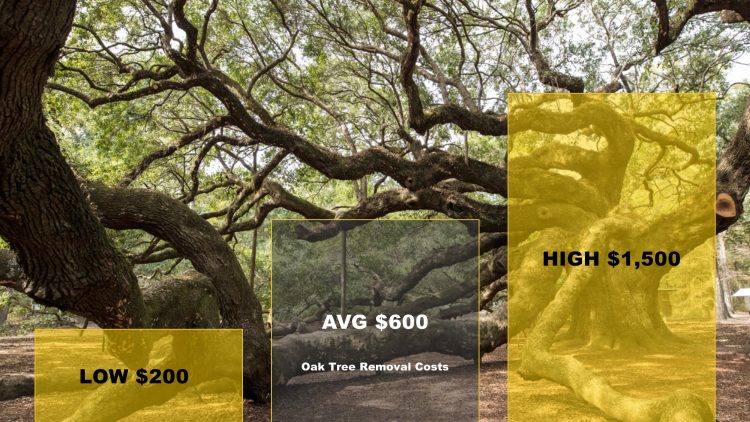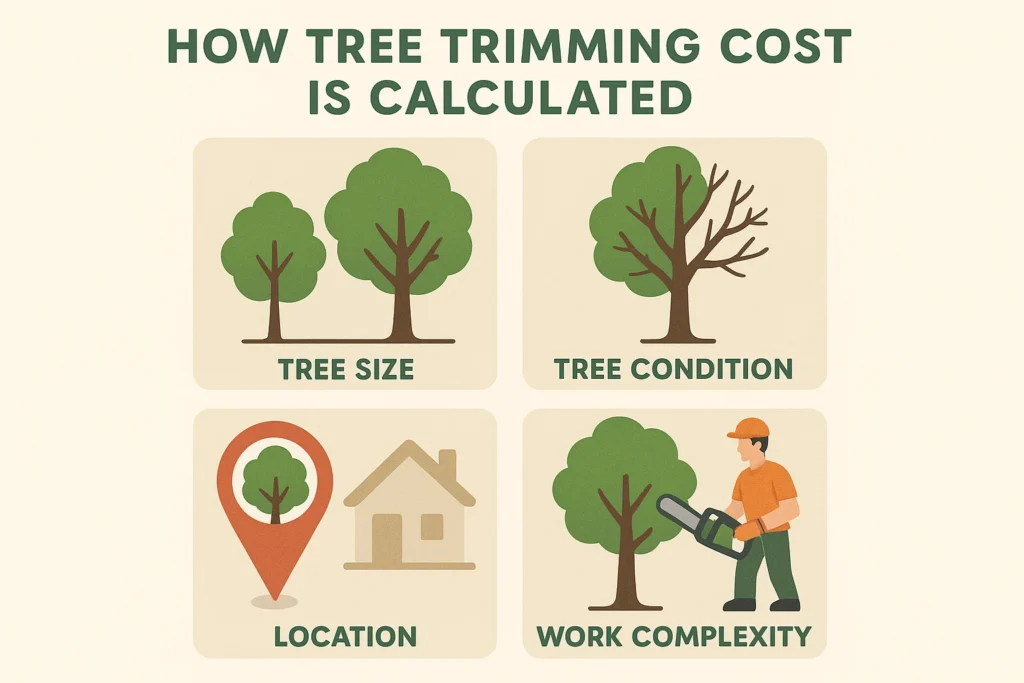Featured
Table of Contents
- – Discounts On Arborist In South Lake Tahoe, CA
- – Transparent Tree Clearing Costs In South Lake ...
- – Complete Guide To Tree Clearing Costs In Sout...
- – Total Tree Service Costs In South Lake Tahoe,...
- – Typical Tree Clearing Costs In South Lake Tah...
- – Decoding Stump Grinding Quotes In South Lake ...
- – Commercial Tree Service Costs In South Lake T...
- – Typical Arborist Prices In South Lake Tahoe,...
- – South Lake Tahoe, CA Tree Removal: Flat Rates
- – South Lake Tahoe, CA Stump Grinding Cost Bre...
- – South Lake Tahoe, CA Tree Trimming: Common P...
- – South Lake Tahoe, CA Tree Trimming Pros And ...
- – What Will An Arborist Cost Me In South Lake ...
- – South Lake Tahoe, CA: Typical Stump Removal ...
- – Standard Stump Grinding Costs In South Lake ...

The subsections listed below supply more detailed information about rates, consisting of an average variety for each. TypeAverage Elimination CostPineConiferPalmMagnoliaArborvitaeAshCedarSweet GumEucalyptusSycamoreCypressOakMaplePoplar You can expect to pay between to remove a pine, depending on its size. Removing a pine is among the more budget friendly tasks unless it is one that has actually been around for many years and is quite big.
Discounts On Arborist In South Lake Tahoe, CA
Pines also have a tap root that grows deep into the soil, which can show to be more tough to eliminate. The procedure itself involves a specialist cutting the tree, clearing the base, cutting the surface area roots, eliminating the stump, and lastly dealing with the soil. Without an expert hand, you risk leaving pine seedlings behind, which will fall from the roots of distressed pines.
Transparent Tree Clearing Costs In South Lake Tahoe, CA
The U.S. national average for conifer elimination is roughly to have the conifer cut down, hauled away, and the stump ground or removed completely. Conifers are usually easier to eliminate, and even though they can grow quite high, they do not cost a fortune to eliminate. Conifers include pine, spruce, fir, and juniper trees.
Complete Guide To Tree Clearing Costs In South Lake Tahoe, CA
While conifers are lovely, they kill native plants and particular types of lawn (arborist). The typical price of palm elimination depends on the height as much as the type, varying from.
Total Tree Service Costs In South Lake Tahoe, CA
That is why it is necessary to understand which type you are eliminating. While you do not need an herbicide to eliminate a palm tree, there are some steps your elimination expert will need to require to ensure the job is done correctly. There are 2 ways they can eliminate them: by slicing them down or digging them up.
Typical Tree Clearing Costs In South Lake Tahoe, CA
This is because little animals like rats and scorpions frequently reside in them. Plus, lots of types will have spikes, too. From there, they remove the real tree and after that the stump. Anticipate to pay in between to eliminate this kind of tree, depending upon the precise size and details of the task.
Decoding Stump Grinding Quotes In South Lake Tahoe, CA
There are three types: green, white, and black ash. White ash is understood for its lots of colors. With its gray-tinged bark, its leaves are green or purple in the spring and golden yellow or purplish-red in the fall. They take pleasure in moderate climates and great deals of sun. The green ash is called such due to its green or yellow foliage.
Commercial Tree Service Costs In South Lake Tahoe, CA

Due to the variation in height, the removal price variation is wide from. A coniferous, evergreen tree, the cedar is a durable types.
Typical Arborist Prices In South Lake Tahoe, CA
The growth of false cedars varies from 50 feet up to 230 feet high. With star-shaped leaves and stunning fall colors, the sweet gum is considered a medium to large tree.
South Lake Tahoe, CA Tree Removal: Flat Rates
Generally, it costs in between to get rid of a eucalyptus. Eucalyptus are not typical everywhere, but they are rather large compared to others, which is why even the smaller ones are so costly to eliminate.
South Lake Tahoe, CA Stump Grinding Cost Breakdown
There are a handful of methods to do this, consisting of burning, pulling, grinding, or eliminating them with herbicide. Anticipate to pay between to remove sycamores, based on the height, trunk size, and amount of work included. Sycamores are among the biggest wood trees, normally ranging from 60 to 100 feet tall and as broad as 15 feet.
South Lake Tahoe, CA Tree Trimming: Common Pricing Mistakes
The first two steps will expose the withins of the tree and cut off the flow of nutrients up the trunk. From there, a professional applies herbicide to eliminate the tree and cuts down the trunk.
South Lake Tahoe, CA Tree Trimming Pros And Cons: Value
There are lots of different types of Cypress trees, but the most widespread are the Leyland, Arizona, Bald, and Italian. The Bald Cypress grows in swampy or extremely wet areas while the others delight in a dry, warm, or hot climate (tree cutting). They can grow as high as 80 to 100 feet high
What Will An Arborist Cost Me In South Lake Tahoe, CA

Prone to illness, the Cypress is one of the most prized woods for furnishings. The average oak grows to around 60 feet, and depending upon the complexity of the elimination, it costs approximately to remove. The specific size of your oak and the effort required to fell it impact what you will in fact spend for removal along with any extra services like stump grinding.
South Lake Tahoe, CA: Typical Stump Removal Costs
Access to the trees and the roots will likewise affect the general cost. Maples are typically among the more costly trees to get rid of due to the fact that of their size and the work involved in the removal.
Standard Stump Grinding Costs In South Lake Tahoe, CA
Poplars are giants of the species. Growing as high as 90 to 115 feet, these huge lumbers are primarily discovered in The United States and Canada and include the aspen, cottonwood, and balsam trees. Boasting an extensive root system, poplars can be expensive to remove when totally grown. The procedure to get rid of trees involves all the cutting and cutting of the branches and trunk, bringing it down to a stump.
Table of Contents
- – Discounts On Arborist In South Lake Tahoe, CA
- – Transparent Tree Clearing Costs In South Lake ...
- – Complete Guide To Tree Clearing Costs In Sout...
- – Total Tree Service Costs In South Lake Tahoe,...
- – Typical Tree Clearing Costs In South Lake Tah...
- – Decoding Stump Grinding Quotes In South Lake ...
- – Commercial Tree Service Costs In South Lake T...
- – Typical Arborist Prices In South Lake Tahoe,...
- – South Lake Tahoe, CA Tree Removal: Flat Rates
- – South Lake Tahoe, CA Stump Grinding Cost Bre...
- – South Lake Tahoe, CA Tree Trimming: Common P...
- – South Lake Tahoe, CA Tree Trimming Pros And ...
- – What Will An Arborist Cost Me In South Lake ...
- – South Lake Tahoe, CA: Typical Stump Removal ...
- – Standard Stump Grinding Costs In South Lake ...
Latest Posts
Yauco, PR Tree Clearing Pricing Tiers
South Lake Tahoe, CA Tree Cutting Quote For Homeowners
Batesville, AR Stump Grinding Customer Reviews
More
Latest Posts
Yauco, PR Tree Clearing Pricing Tiers
South Lake Tahoe, CA Tree Cutting Quote For Homeowners
Batesville, AR Stump Grinding Customer Reviews